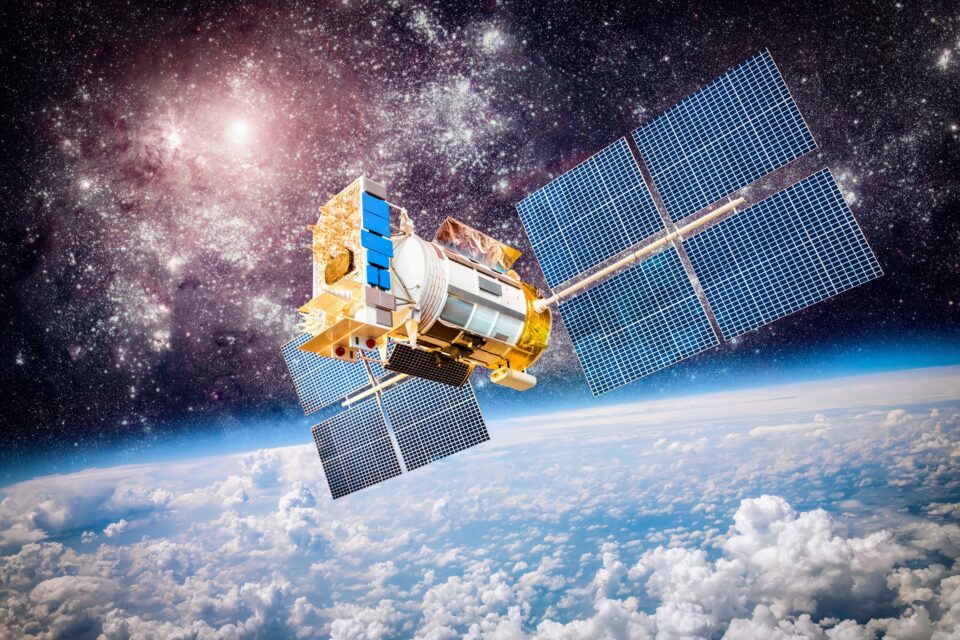Communications satellites may disrupt astronomical observations

Recent observations of the BlueWalker 3 prototype satellite have indicated that it’s a particularly bright presence in the night sky, rivaling the intensity of many major stars. Scientists are increasingly concerned that if unchecked, expansive satellite groups could compromise our terrestrial star observation and hinder radio astronomy.
Constellations of satellites
While numerous corporations harbor ambitions of launching “constellations” of satellites – vast clusters of hundreds of satellites that aim to provide universal mobile or broadband connectivity – there are significant challenges to such endeavors.
These satellites, due to their required positioning in low-Earth orbit and their significant size, have the potential to disrupt astronomical observations.
Focus of the study
Recently, a study led by the IAU Center for the Protection of the Dark and Quiet Sky from Satellite Constellation Interference (CPS) in collaboration with Imperial College London (ICL) has investigated the potential implications of the prototype BlueWalker 3 satellite for astronomy.
“The night sky is a unique laboratory that allows scientists to conduct experiments that cannot be done in terrestrial laboratories,” said Dave Clements, a physicist at ICL.
“Astronomical observations have provided insights into fundamental physics and other research at the boundaries of our knowledge and changed humanity’s view of our place in the cosmos. The pristine night sky is also an important part of humanity’s shared cultural heritage and should be protected for society at large and for future generations.”
BlueWalker 3 satellite
AST SpaceMobile deployed the BlueWalker 3 satellite into low-Earth orbit on September 10, 2022, as a precursor for a more expansive project to launch a constellation of over a hundred similar satellites, all targeted for mobile communication functions. Observations soon after the satellite’s launch already categorized it as a notably bright entity in the night sky.
To delve deeper into its impact on astronomy, the CPS initiated a comprehensive global observation drive. This initiative included both amateur and professional astronomers contributing observations from various regions like Chile, Aotearoa New Zealand, Morocco, the US, the Netherlands, and Mexico.
Observational data
Over 130 days, this observational data revealed a significant spike in the satellite’s brightness, aligning with the complete deployment of its antenna array, which, spanning 64 square meters, is acknowledged as the most expansive commercial antenna ever dispatched to a low-Earth orbit.
A part of these observations were then utilized to determine the satellite’s trajectory. By comparing anticipated trajectories with the gathered data, it became possible to assess the precision of these predictions, especially in the context of variables such as atmospheric drag.
Knowing where satellites are positioned is pivotal for astronomers since it enables them to anticipate and account for these entities during their studies. However, countering their brightness presents challenges.
In addition, there are concerns about potential interference with radio astronomy. BlueWalker 3, operating on certain wavelengths, could disrupt radio telescope observations. Some telescopes, located in designated radio-silent zones, are primed to evade terrestrial interference, but satellite transmissions remain a concern.
Further research is needed
“BlueWalker 3 actively transmits at radio frequencies that are close to bands reserved for radio astronomy, and existing observatory protections from radio interference may not be sufficient,” said Mike Peel, the co-lead of IAU CPS’s Sathub and a research associate at the Department of Physics at ICL. “Further research is therefore required to develop strategies for protecting existing and upcoming telescopes from the numerous satellites planned for launch over the next decade.”
While both IAU and CPS acknowledge the transformative potential of these new satellite constellations, they caution against the possibility of inadvertently hindering astronomical studies. The onus, they believe, is on ensuring that these satellite deployments are undertaken with a keen awareness of their potential side effects.
Further observations of BlueWalker 3 will start soon, with astronomers preparing to examine its thermal emissions. Scientists will continue to discuss this topic at the upcoming IAU Symposium: Astronomy and Satellite Constellations: Pathways Forward in October.
The study is published in the journal Nature.









